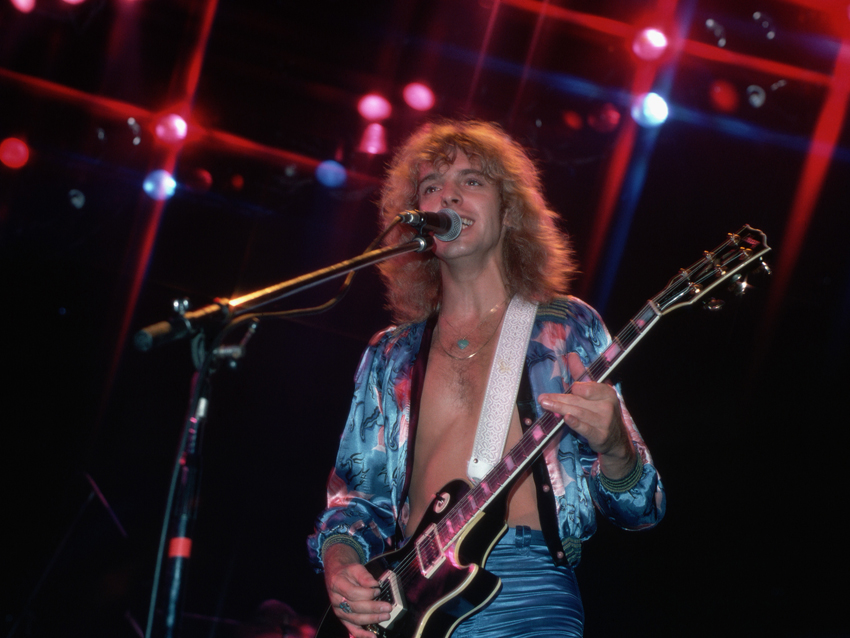
U2
Guitarist: The Edge
Effects used: TC Electronic 2290 Dynamic Digital Delay / Korg SDD-3000
Find it on: The Joshua Tree (1987)
“Whether it’s a Fuzz-Tone or a wah-wah pedal, if it’s really happening, it becomes part of the instrument,” The Edge muses. “I don’t think about playing through an effect; I think about playing the whole thing.”
This integral approach has ensured U2’s guitarist has done more than any other modern guitarist to implant the joys of guitar effects into the collective consciousness. This reached its stadium-filling apex on Where The Streets Have No Name: those circular delayed intro arpeggios (0:14 to 0:35) through two differently timed delays build into partial powerchords (0:35 to 1:17) then flit between styles until the arpeggiated coda (4:21) – ushering in years of world- dominating mainstream success for the Biggest Band In The World.

Robert Fripp
Guitarist: Robert Fripp
Effects used: His self- designed ‘Frippertronics’
Find it on: Exposure (1979)
This reworking of a Gabriel solo track was a notable early instance of Fripp using his own wah/fuzz/delay/tape loop set-up known as Frippertronics. While TC Electronics’ digital delays later replaced Fripp’s Revox decks, this track remains a pioneering moment in ambient guitar experimentation.

Sweet
Guitarist: Andy Scott
Effects used: Shin-Ei Siren/ Hurricane
Find it on: The Very Best Of Sweet (2005)
It featured a main riff nearly identical to David Bowie’s Jean Genie, released via the same label just weeks earlier, yet Sweet’s 1973 track stuck in the mind more. This is partly due to Scott’s ‘siren’ intro riff created on, yes, a Shin-Ei Siren/ Hurricane pedal.

Smashing Pumpkins
Guitarist: Billy Corgan
Effects used: Electro- Harmonix Big Muff
Find it on: Siamese Dream (1993)
Corgan’s JCM800 modified for KT88 valves with a Big Muff plugged into its low-gain input became the signature sound of a still astonishing album. Today would become the band’s breakthrough hit, and when the angelic intro gives way to a crashing wave of fuzz, millions of teenagers across the globe still throw shapes in unison.

The Beatles
Guitarist: Paul McCartney
Effects used: Tone Bender
Find it on: Rubber Soul (1965)
Despite experimenting with a Maestro Fuzz-Tone as early as the 1963 She Loves You sessions, Rubber Soul saw the first appearance of a fuzzbox on a Beatles recording: a Gary Hurst- designed Tone Bender in combination with Macca’s new left-handed Rickenbacker 4001 on Harrison’s Think For Yourself.

Jimi Hendrix Experience
Guitarist: Jimi Hendrix
Effects used: Dallas-arbiter Fuzz Face, Roger Mayer octavia
Find it on: Purple Haze (1967)
Hendrix’s use of fuzz pedals went back even further. Late US bluesman Mike Bloomfield recalled seeing Jimi using a Maestro Fuzz-Tone (as heard on the Stones’ Satisfaction) in the summer of 1966, while he adopted a Dallas-Arbiter Fuzz Face from the pedal’s launch later that year: hear it sting on Purple Haze (straight from the intro) and Bold As Love (his soloing tone suddenly gets filthy at 1:51).
Then there’s the Octavia, purpose-built for Jimi by UK FX legend Roger Mayer. It first appeared on the stinging outro solo of Purple Haze and can also be clearly heard on Little Miss Lover (from 1:19), One Rainy Wish (starting at 2:10), and the Band Of Gypsys’ Who Knows (from 6:28).

REM
Guitarist: Peter Buck
Effects used: Tremolo pedal (make unknown)
Find it on: Monster (1994)
REM’s follow-up to automatic For The People was laced with distortion and throbbing tremolo. Hear the latter on the opening song (at 0:41), reinventing Peter Buck’s signature style in an instant. Nice backwards solo, too.

Muse
Guitarist: Matt Bellamy
Effects used: ZVex Fuzz Factory (built into a custom Hugh Manson electric)
Find it on: Origin Of Symmetry (2001)
The opener to Muse’s second album is a statement of grandiose intent and a dramatic fusion of Queen’s rock operatics and Radiohead’s guitar contortions. Witness the gargantuan riff kicking in at 1:24 with a wall of FF-induced carnage.

Van Halen
Guitarist: Edward Van Halen
Effects used: MXR Phase 90
Find it on: Van Halen (1978)
Ed rubs his palm on the strings to produce a sound not unlike the frenetic crashing of waves on to a beach. always adamant that he tried to get effects from the guitar rather than be reduced to ‘tap dancing’, even he had to admit defeat in this case.

Radiohead
Guitarist: Jonny Greenwood
Effects used: Electro- Harmonix Small Stone, Mutronics Mutator
Find it on: OK Computer (1997)
Radiohead’s effects scientist Jonny Greenwood writ his ambition large in Paranoid Android. Phased E-H Small Clone arpeggios adorn the verses in the song’s first movement (0:09) before the climax sees a killswitched solo fed through a Mutronics Mutator rack filter and liberally contorted (5:48).

Stevie Ray Vaughan and Double Trouble
Guitarist: SRV
Effects used: Two wah pedals (likely Vox)
Find it on: Soul To Soul (1985)
Two wah-wahs (one of which belonged to Jimi Hendrix himself, ending up with SRV via brother Jimmie) wired together in line are responsible for this torrential tone cascade from Soul To Soul’s opening salvo. Vaughan’s trick of rocking the pedals in opposite directions created a scything, dense and unpredictable phasing wall of wah funky enough to have Hendrix’s fingers (and toes) twitching in his grave.

Led Zeppelin
Guitarist: Jimmy Page
Effects used: MXR Blue Box
Find it on: In Through The Out Door (1979)
Page is a master of getting great guitar sounds, but one true ‘WTF?’ moment arrived courtesy of MxR’s oddball Blue Box, which adds fuzz and a note two octaves below the original. It sounds crazy, and but for this solo the pedal would probably have been scrapped long ago.

Steve Vai
Guitarist: Steve Vai
Effects used: Eventide H3000 Harmonizer
Find it on: Passion And Warfare (1990)
Not one for making do with stock equipment, Vai built a patch from scratch in order to mimic the flow and movement of the titular dancer. Based around pin-sharp, pitch-shifted octaves, Eventide still supplies Vai-constructed upgrades for the unit to the present day.

Robin Trower
Guitarist: Robin Trower
Effects used: Univox Uni-Vibe
Find it on: Bridge Of Sighs (1974)
This track’s psychedelic churn comes from a univox uni-vibe – sources differ on what drive tones Robin used, but he favoured Dan armstrong Red Ranger Treble Boost and Fender Blender octave fuzz during the mid-70s.
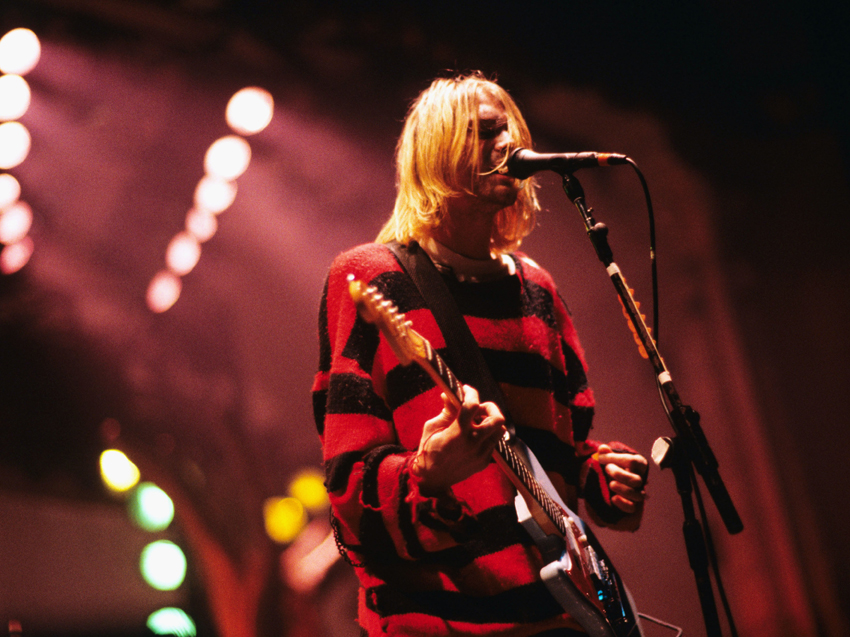
Nirvana
Guitarist: Kurt Cobain
Effects used: Electro-Harmonix Small Clone Chorus
Find it on: Nevermind (1991)
Immortalised in a haunting riff that became a ‘must- learn’ for any fledgling grunge guitar antihero, the Small Clone, with the depth switch hard-wired by Cobain’s guitar tech to the ‘up’ position, provided watery textures to mirror the album’s shimmering sleeve art.

Queen
Guitarist: Brain May
Effects used: Echoplex EP-3
Find it on: Sheer Heart Attack (1974)
Unlike May’s live solo piece, this example uses just one single repeat rather than two set equidistant to build up harmonies. Queen frontman Freddie Mercury used this latter set-up during vocal sections of Prophet’s Song on the band’s next album, A Night At The Opera.

Tool
Guitarist: Adam Jones
Effects used: Gig-FX Chopper
Find it on: 10,000 Days (2006)
For 10,000 Days’ eerie, spiralling two-part 17-minute centrepiece Jones was influenced by producer Joe Barrei’s pedal expertise, and employed the tremolo speed express pedal manipulation of the Chopper, with Gig-Fx integrating custom modifications especially for Jones.

Guns N' Roses
Guitarist: Slash
Effects used: Roland SRV-2000 Stereo Reverb (?)
Find it on: Appetite For Destruction (1987)
Much of the gear Slash used to record AFD is shrouded in mystery, and the delay used at the very start of Welcome To The Jungle is no exception. Slash can only remember he used a ‘common’ rackmount studio echo unit, but some claim it’s the ‘secret delay mode’ on an SRv-2000 Stereo Reverb that can be heard cascading through the start of this rock classic.

The Rolling Stones
Guitarist: Keith Richards
Effects used: Maestro Fuzz-Tone FZ-1
Find it on: 40 Licks (2002)
One morning in May 1965, at a Florida motel, Keith Richards awoke from a dream and – fuzzyheaded – fumbled around, grabbed a guitar and played an idea running through his head into a nearby tape recorder. “On the tape you can hear me drop the pick,” he recalled, “the rest is me snoring.” Yet this germ of an idea soon grew into the Stones’ biggest hit – and with the addition of an early Fuzz-Tone pedal, a hit that forever changed the way guitarists wanted to sound. Yet Richards wasn’t thrilled. “If I’d had my way,” he grumbles, “Satisfaction would never have been released. The song was as basic as the hills, and I thought the fuzz guitar thing was a bit of a gimmick.”

Black Sabbath
Guitarist: Tony Iommi
Effects used: Colorsound wah, Rangemaster Treble Booster
Find it on: Paranoid
The Dark Lord’s first use of a wah to colour one of his riffs into a darker shade of black came on the band’s second album, adding articulation to each note with a Rangemaster modified by his roadies for treble boost.

Blur
Guitarist: Alex James
Effects used: Home-made distortion pedal
Find it on: Blur (1997)
It might be one of the most air-guitar’d songs of all time, but the famous ‘woo-hoo!’ moment (and all the distorted parts of the song) are actually played by bassist Alex James, double- tracking a clean bass part with a monstrously filthy distorted one to create a headbanging wall of low-end dirt. The fuzz came courtesy of a home-made distortion box that has “since got lost”, according to James.

Bon Jovi
Guitarist: Richie Sambora
Effects used: Heil Talk Box
Find it on: Slippery When Wet (1986)
Bon Jovi oozed classic rock from every pore, and for Livin’ On A Prayer, Sambora decided to dredge up the talk box, an effect unheard for a decade. “When I brought it up, everybody in the band started laughing at me like I was a goofy bastard,” Sambora recalls.

Foo Fighters
Guitarist: Dave Grohl
Effects used: Heil Talk Box
Find it on: There Is Nothing Left To Lose (2000)
Dave Grohl’s not the first guitarist to abandon oral hygiene concerns to bring the Talk Box’s vocal sound to a record, but Generator’s opening riff is one of the most memorable. Wrapping his gums around a piece of surgical tube, Grohl let Bob Heil’s magic box bounce the sound around his mouth – many drunken impersonations followed.

The Police
Guitarist: Andy Summers
Effects used: MXR Dyna- Comp, Electro-Harmonix Electric Mistress
Find it on: Regatta De Blanc (1979)
This classic example of Summers’ rhythm tone is based around a flanger rather than a chorus and he used the very first version of the Mistress for the recording. The pedal utilises ‘bucket brigade’ devices, an integrated circuit that formed the core of most pre-digital modulation pedal-based effects.

KT Tunstall
Guitarist: KT Tunstall
Effects used: Akai E2 Head Rush
Find it on: Eye To The Telescope (2004)
KT Tunstall’s performance of Black Horse and The Cherry Tree on Later... With Jools Holland music show was tremendously effective. Building her vocals, acoustic and rhythms through the akai E2 Head Rush Delay/ Looper, she left the audience speechless, and catapulted herself to stardom.

Rush
Guitarist: Alex Lifeson
Effects used: Electro- Harmonix Electric Mistress
Find it on: Permanent Waves (1980)
Alex Lifeson’s rig has grown in proportion to Rush’s back catalogue, but his pedalboard was once a fairly a modest affair. And for one of the great flanger moments in rock, he looked to the classic Electric Mistress to provide the key tonal tool for the hammer- on and pull-off fest that is this song’s instantly recognisable intro riff.
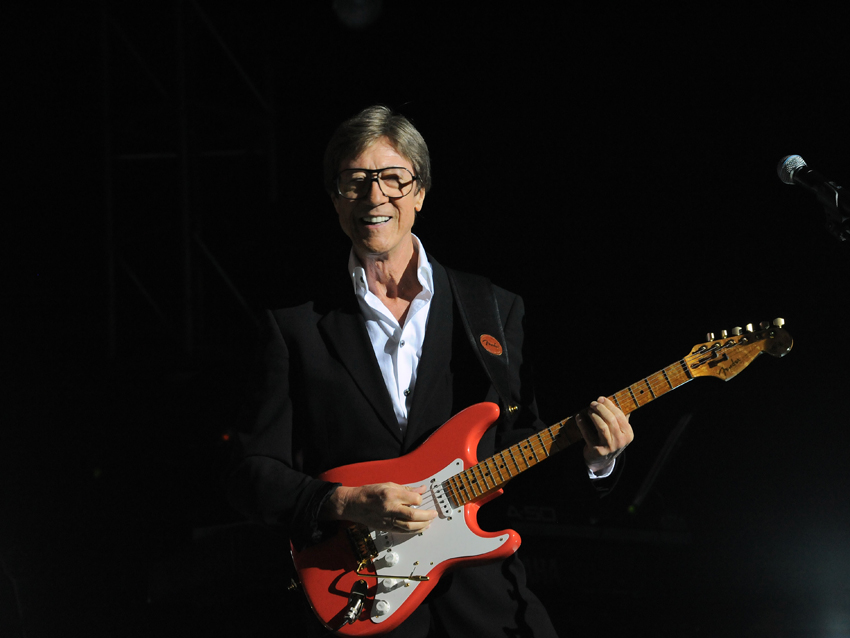
The Shadows
Guitarist: Hank Marvin
Effects used: Meazzi Tape delay
Find it on: Apache (single, 1960)
The rippling delay sounds on Apache, which influenced a generation of young players and created a haunting sound that would define Hank and the Shads forevermore, came from an Italian drum-operated mult-head tape echo unit that Marvin acquired from singer Joe Brown.

Bloc Party
Guitarist: Russell Lissack
Effects used: Audio Kitchen (custom pedal)
Find it on: Four (2012)
The distinctive and catchy, hi-fi, ray gun-style introductory riff uses two delays at different tempos – and come courtesy of a unit which creator audio Kitchen is currently sworn to secrecy on, according to the company website.
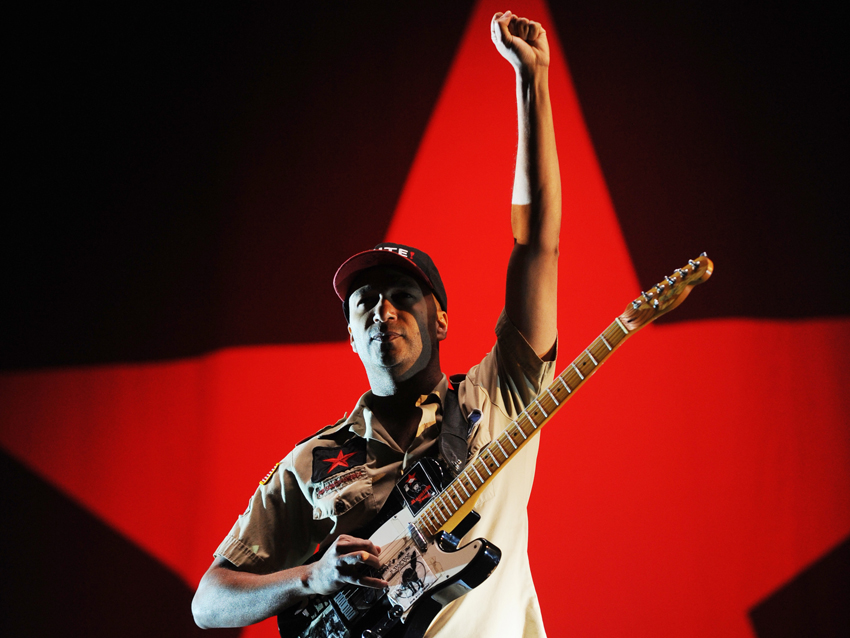
Rage Against The Machine
Guitarist: Tom Morello
Effects used: DigiTech Whammy
Find it on: Rage Against The Machine (1992)
He’s a guitarist who has made his reputation with the incredible sounds he can make on a guitar with just his hands, but that certainly doesn’t mean Tom Morello has shunned effects in his work with Rage Against The Machine and Audioslave. For the former’s vehement calling card, he used a DigiTech Whammy for the solo break (3.52). Setting it two octaves up, Morello pushed the Whammy’s expression pedal forward and back, but his technique still remained vital; it’s the tremolo picking that gives Killing In The Name’s solo its climatic crescendo.

Joe Walsh
Guitarist: Joe Walsh
Effects used: Homemade Talk Box
Find it on: The Smoker You Drink, The Player You Get (1973)
This classic- rock radio staple was among the first to use the talk box effect on electric guitar (3:11). Walsh used a homemade unit but soon collaborated with engineer Bob Heil to make the commercial Talk Box, later to become synonymous with Peter Frampton.

The Smiths
Guitarist: Johnny Marr
Effects used: Tremolo (Fender Twins), AMS harmoniser
Find it on: Hatful Of Hollow (1984)
The throbbing, swampy intro riff was played through two pairs of Fender Twins while he and producer John Porter manually adjusted the tremolo rates until they coincided. and then Marr put a harmonised slide wail over the top. “I wanted an intro that was almost as potent as Layla,” he says, “when it plays in a club or a pub, everyone knows what it is.”
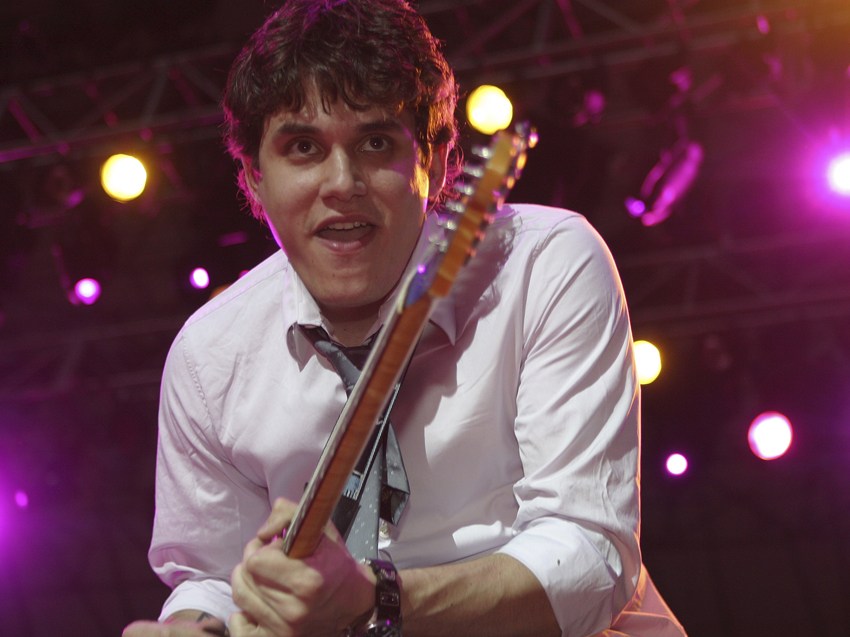
John Mayer
Guitarist: John Mayer
Effects used: Linn AdrenaLinn
Find it on: Heavier Things (2003)
The signature intro riff of Mayer’s hit came to him when he visited new York guitar shop Rudy’s to try out a Rick Turner guitar and Roger Linn’s sequencer-style Fx box, the adrenaLinn. “I found this combination of the beat and the arpeggiator: I’d never heard a guitar do that before...”, he said. It was his breakthrough hit, and he was on his way to stardom.
Guitarist is the longest established UK guitar magazine, offering gear reviews, artist interviews, techniques lessons and loads more, in print, on tablet and on smartphones
Digital: http://bit.ly/GuitaristiOS
If you love guitars, you'll love Guitarist. Find us in print, on Newsstand for iPad, iPhone and other digital readers
